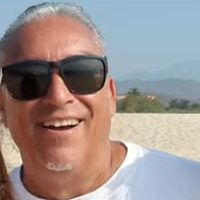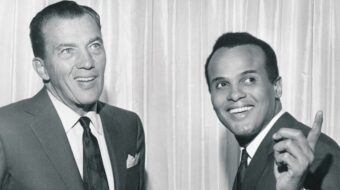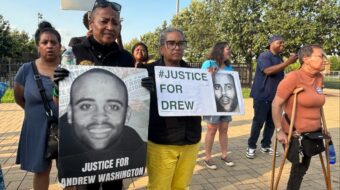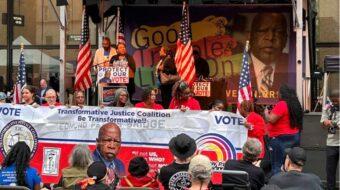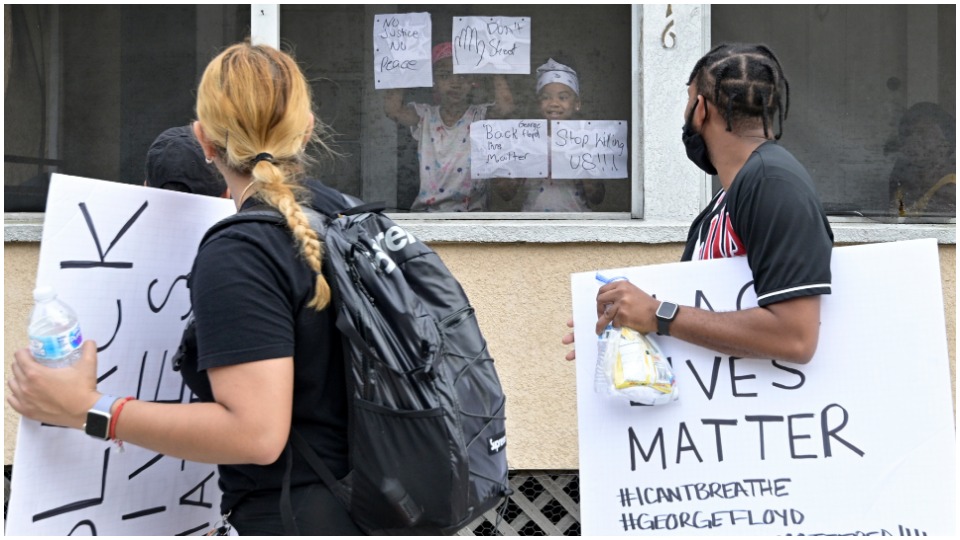
LOS ANGELES—Thousands of people protested in the streets against the high-profile killings of Eric Garner, Michael Brown, Ahmaud Arbery, Trayvon Martin, and other victims.
Many thousands more in our communities are maintaining a safe distance and sheltering-in-place who also support what is happening in the streets.
These are two component parts of the same resistance.
Residents of this city, as in many other cities around the country, are participating in the George Floyd protest. Not long ago, during a recent protest, I witnessed masses of protesters marching during the calmness of the evening as the setting sun was glowing over downtown Los Angeles. “I can’t breathe, I can’t breathe, What’s his name? What’s his name?” thousands chanted. The demonstrators carried protest signs that provided a montage of color and messages adding to the show of support for the cause.
Soon the sound of sirens broke up the evening peace. The night became a glow of red flashing lights, and a gray smoky haze hovered over the streets, like a fog over the Pacific coastline. Police in riot gear took over the streets.
Within a flash, police lined up to rush into the group of demonstrators. Orders bellowed out over a complex, integrated police communication command system coming from a secure bunker. The officers in the field were given their orders to clear the streets.
Protesters attempted to escape, running in all directions. In the commotion and steadfast police determination to clear the streets, there was a sign of hope. An older woman held up a sign as she stood on the sidewalk, “They speak for me: Justice now.” I asked her if she was concerned with the looting and violence that had taken place. “No,” she answered, “I have seen the rich looting. They loot and get away with it because they are protected. Common people get blamed for everything that is wrong with this country. So it doesn’t matter how we act.” She stood alone, wearing her mask stolid as an ancient oak tree. She stood determined to hold her sign to get her message across.
The cities of Los Angeles, Santa Monica, Beverly Hills, Long Beach, and hundreds of smaller cities around Los Angeles County have been inundated with demonstrators and police. Pockets of protesters roamed the streets, stretching police resources. Some streets are eerily quiet until suddenly a small group of protesters appears. Within minutes, protesters gather in another area. Police in riot gear sometimes rush into the group. Other times they just stand by. Many arrests are made.
All over the county, families placed candles in their windows with signs reading “Black Lives Matter.” Shining lights up into the night sky was a simple way to indicate support for the George Floyd demonstrations. Eight-minute silent demonstrations in countless households were another way of showing support. As demonstrations continued, mostly peaceful, people began to recognize, wherever they were, that the world was watching.
The protesters in the streets are not alone.
The vast majority of community people and youth are not rioting and looting. Most people, especially people of color, are staying within the confines of their peaceful neighborhoods and the safety of their homes. They too, in their own ways, are active participants in the cause against police brutality, discrimination, and expressing outrage for the murder of George Floyd. The thousands of people who are not in the streets are just as upset, and just as much in the quest for justice, as those who are in the streets.
Some people are asking the question: Why are protesters causing damage and looting stores? People say that protesters are only using the death of George Floyd as an excuse to cause mayhem. There is already substantial evidence that some white supremacists, masquerading as “Antifa,” have acted as provocateurs to give the demonstrations a bad image.
But the question should be: Why have the community voices been ignored over all these decades concerning police brutality and discrimination? Why do our city officials feel the need to militarize the police and place them in minority communities? The voices of the community in the streets, inside churches, homes, and businesses have been asking and seeking justice for a long, long time. They have not been seen. They have not been heard.
In 1965, Los Angeles was burning, and rioting took place in the streets of Watts. In 1992, Los Angeles experienced three days of rioting and the destruction of businesses. In both cases, the National Guard was called in. Now, in 2020, Los Angeles again has protesters in the streets. Businesses are being looted. There are confrontations between demonstrators and the police. There are those who will act out in the streets and those who will remain in their homes. But both those on the outside and those on the inside see and understand the same tragedy being acted out daily by out-of-control police forces nationwide.
“I know what’s going on”
Luis (not his real name) is a 16-year-old living in Boyle Heights, a mixed but mostly Latinx neighborhood. He is not participating in the demonstrations. He lives with his father and mother. His father is ill and unemployed. His mother, a hotel maid, has been unemployed for several weeks. Luis told me he doesn’t have time to participate in demonstrations. He is only trying to help his family to survive. He works part-time with his uncle as a gardener.

“I know what’s going on,” Luis says. “I support the demonstrators who are out in the streets. They represent my own way of thinking that there are many things that I think are not working for us in this system. I feel bad that many of them are being harassed and beaten by the police. What the police did to George Floyd is wrong. Listen, I’m a law-abiding person, but I’ve seen what the police do. I’ve seen them active in my community. So if justice is served by being in the streets, so be it. I’m definitely there in spirit, but my priority doesn’t allow me to be there with them. Tell your readers that they are mistaken if they think that silence means I don’t care and that I don’t know what’s going on. I do.”
Susie did not want her real name to be mentioned. She is a 26-year-old, protesting in downtown L.A. She was sitting on a curb. She told me she was chased by the police but escaped down an alley. She makes no excuses for being one of the protesters. Her sign read, “No Justice, No Peace.” Susie told me she would soon go back into action where she’d join others holding up their arms in the air in a peaceful action of solidarity. I asked her if she knew that a curfew would be in effect. It didn’t bother her. “There are people who didn’t abide by the shelter-in-place restriction, so why should I abide by the curfew? I will do what I have to do. I have been told that I am participating in lawlessness. Police are the ones participating in lawlessness.”
I was a witness to what was happening in the streets of Los Angeles. However, my son accompanied me to make sure we were acting in a safe manner due to the continuing coronavirus situation.
Two component parts of the same resistance: People in the streets and at home in our communities are not divided. They are united. People in the communities know what’s going on. Don’t take their silence as an indication of ignorance. Don’t take their non-appearance in the streets as a sign of non-support for the protesters. As one protester shouted out, “An injury to one, is an injury to all.” This is still a good idea.
Community people’s voices will continue to shout out. And if need be, they will protest in the street. Some will act out, some will pray at home for calm, many more will act peaceably. Millions of people are now engaged, and in the weeks and months to come, many millions more will be ready to vote for a change.


